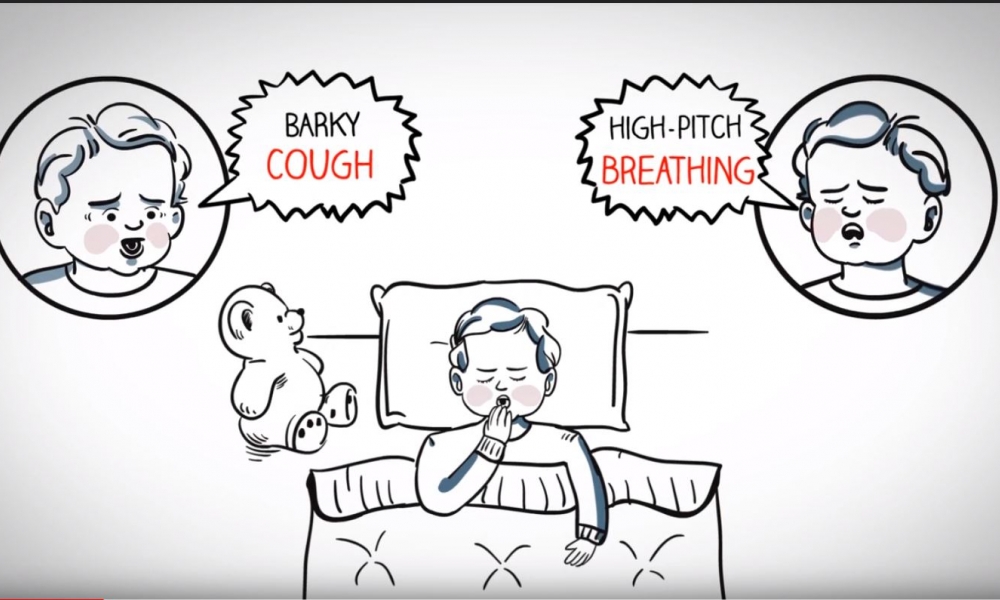
OBJECTIVE
To refine and evaluate the usability of arts-based, digital knowledge translation tools, specifically an eBook and two whiteboard animation videos, for parents of children with croup and gastroenteritis.
RESEARCH PROPOSAL
The purpose of the study is to work with parents to develop, refine and evaluate the usability of arts-based, digital knowledge translation (KT) tools, specifically an eBook and two whiteboard animation videos, for parents of children with croup and gastroenteritis. The research team is seeking to answer the following research question: What is the usability of arts-based, digital knowledge translation tools developed in this project?
The research team is seeking to recruit parents in the Emergency Department (ED) to participate in a short, cross-sectional survey to assess the usability of 1 of 3 knowledge translation tools designed for parents on two common childhood illnesses: croup and gastroenteritis. The recruitment goal is 60 parents at Stanton Territorial hospital and 180 parents overall (60 participants from urban, rural and remote settings). The team is also seeking to recruit parents to participate in 1 focus group to discuss the usability and the pros/cons of the 3 knowledge translation tools. The recruitment goal is 5-10 parents.
Inclusion criteria:
For the Survey portion, participants must:
1) be parents
2) be present in one of the study site emergency departments
3) be fluent in English (speaking, reading, writing, hearing)
For the Focus Group portion, participants must:
1) be parents
2) be fluent in English (speaking, reading, writing, hearing)
Mixed methods approach to determine the usability of the knowledge translation tools:
1. Cross-sectional survey: Study staff will approach parents/primary caregivers in the waiting rooms of each general ED and explain the data collection process. The research team will ask people in the waiting room at the moment of contact if they meet the inclusion criteria. After study screening and consent, parents will be handed the iPad to randomly view/listen to one of the KT tool prototype(s). They will then complete a 10-question survey to assess their perceptions of the prototype’s usability. The data from this survey will be cleaned and managed according to industry standards. To uncover potential usability issues the data in the free text boxes will be analyzed using content analysis and any suggestions for revision will be grouped and examined. The results from this stage will inform prototype revision.
2. Focus group: Parents/primary caregivers will be purposefully recruited from the participating hospital sites or surrounding community (e.g., existing parent groups) to ensure a breadth of age, education, gender and invited to participate in a focus group. Groups will include 5 to 10 parents and will range from 60 to 90 minutes. Interview questions will focus on comparing the usability features and the pros and cons of each of the three KT tools. The focus groups will be conducted by the research team. The focus groups will be audio recorded or a court reporter will conduct real-time transcription. Data will be cleaned (anonymized, de-identified) prior to analysis and managed using NVivo software. The inductive analysis will occur in three phases: coding, categorizing, and developing themes.
The research team will create and post 1-page infographic summaries (picture based, grade 6 reading level) of the research results through the website (www.echo.ualberta.ca) and through the Translating Emergency Knowledge for Kids website (www.trekk.ca) and related social media platforms. The team will also provide final versions of the knowledge translation tools (whiteboard animation video and eBook) free of charge on the respective websites.
The fieldwork for this study was conducted from April 4th to September 30th, 2016.
RELEVANT LINKS
- TREKK Webpage
- Interactive E-Book: Sick all Night: When to Go to the Hospital with Childhood Vomiting and Diarrhea
- Video: Childhood Croup
- Article: Pediatric acute gastroenteritis: Understanding caregivers' experiences and information needs. Albrecht, L., Hartling, L. & Scott, S.D. (2016) . Canadian Journal of Emergency Medicine. 9:1-9.

